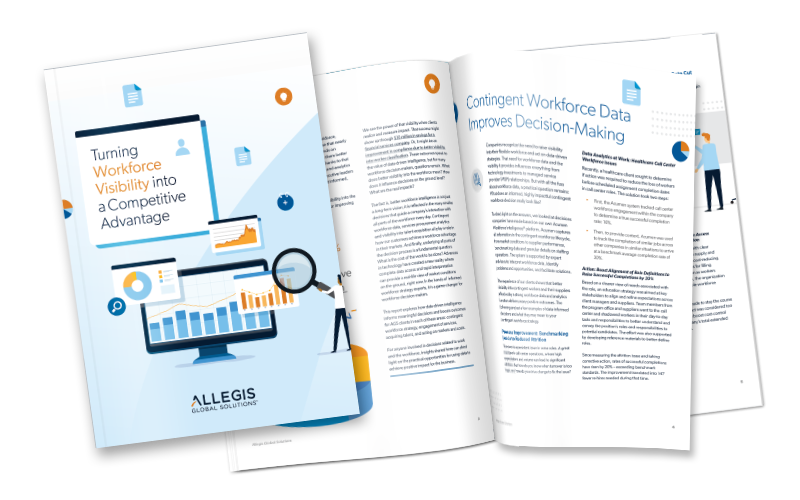Yes, Job Seekers Want to Speak with Humans
For early-stage job seekers, what’s more important: technology or the human touch? According to a recent Allegis Group Pulse survey, the answer is a bit of both, and that should serve as a lesson for employers.

In fact, the survey found that 70 percent of workers favor access to answers about their prospective employer from BOTH online data sources and real people. This figure includes roughly 30 percent who are less concerned about human interaction but would like to know there is a person available, leaving approximately four in 10 who would feel better about the role the sooner they speak to a real person. On the extremes are those who would prefer not to talk to humans until they are sure the opportunity is relevant (19 percent) and another 11 percent who will not consider an opportunity unless it is brought to their attention by a human, whether that person is a close contact, someone in their network, or even a recruiter they don’t yet know.
The message for employers is clear: When it comes to engaging today’s job seeker, providing access to the facts is important, but a personal presence matters, too. As a result, two priorities will continue to shape the direction of talent acquisition as organizations evolve their processes to compete for in-demand workers: technology and the human element.
Technology Initiates the Connection
Today, emerging technologies are helping companies forge connections to talent by navigating a sea of available data and channels for interaction. Thanks to advances in artificial intelligence (AI), employers can pinpoint candidates through information found across multiple social media channels through social search solutions such as HiringSolved. Organizations can boost the power and relevance of their job advertising and candidate communications with writing analysis solutions, such as Textio. They can even automate candidate interaction through solutions such as Olivia, an automated assistant gaining widespread adoption by employers. For any of these technologies, however, the employer would do well to consider its role in helping to forge the candidate connection and then prioritizing investment on those who fill the most urgent needs.
Takeaway: A recent Allegis Group Talent Technologyreport reveals that 75 percent of surveyed talent decision-makers believe their need for new talent technology puts them at a disadvantage in attracting and retaining talent. A full 92 percent say their organizations plan to increase their adoption of talent technologies over the next two years. With that level of interest, the market for talent technology will continue to evolve, and successful employers will continue to focus on prioritizing the adoption of solutions that improve the connection with talent.
The Human Element Creates the Relationship
On the other side of the talent acquisition equation is the human element. As found in the Pulse survey, candidates will likely want to talk with a human sooner rather than later in the process. What happens in that interaction influences the employer’s ability to attract and secure talent.
Ironically, technology can play a large role in humanizing the candidate experience. Great talent organizations understand this, and they apply technology to remove the barriers to human interaction. Those barriers may include the distraction of low-value, high-volume recruiter tasks such as research and sourcing candidates, reviewing resumes, and answering emails with basic questions about candidate status, the employer, or the role itself.
By automating many of these tasks, the technologies free the recruiter to have the time for more valuable interaction with the candidate. The recruiter who does not have to review 500 resumes will have the time to return a candidate’s call or work with the hiring manager to ensure that the job requirements fit the business’ needs and align with the available talent supply.
Takeaway: Technology alone will not replace the recruiter. Instead, it will change the recruiter’s focus from performing research and manual tasks to serving as the human face of the employer to the job seeker. As a result, employer expectations of their recruiters will evolve. In some cases, an employer may favor customer service type experience over Boolean search skills in sourcing. The skills in reviewing resumes and navigating processes will take a back seat to more immediate needs such as advising candidates on career preferences, expanding their networks through candidate relationships, and building trust between strong prospective talent and hiring managers. In short, as technology makes the talent acquisition process more human, the recruiter will have to focus on relationship building and problem-solving skills.
Moving Forward: Humans Power Successful Talent Acquisition
In the face of rapid technology innovation, companies will continue to build on the human aspects of talent acquisition. Even when access to information and automated interactions streamline the process, there will always be a need for understanding and empathy. There also will always be a challenge or question that can only be addressed through a real conversation. By using technology to remove the barriers to those very human needs, employers can keep themselves ahead in the race to secure workers with in-demand skills.

